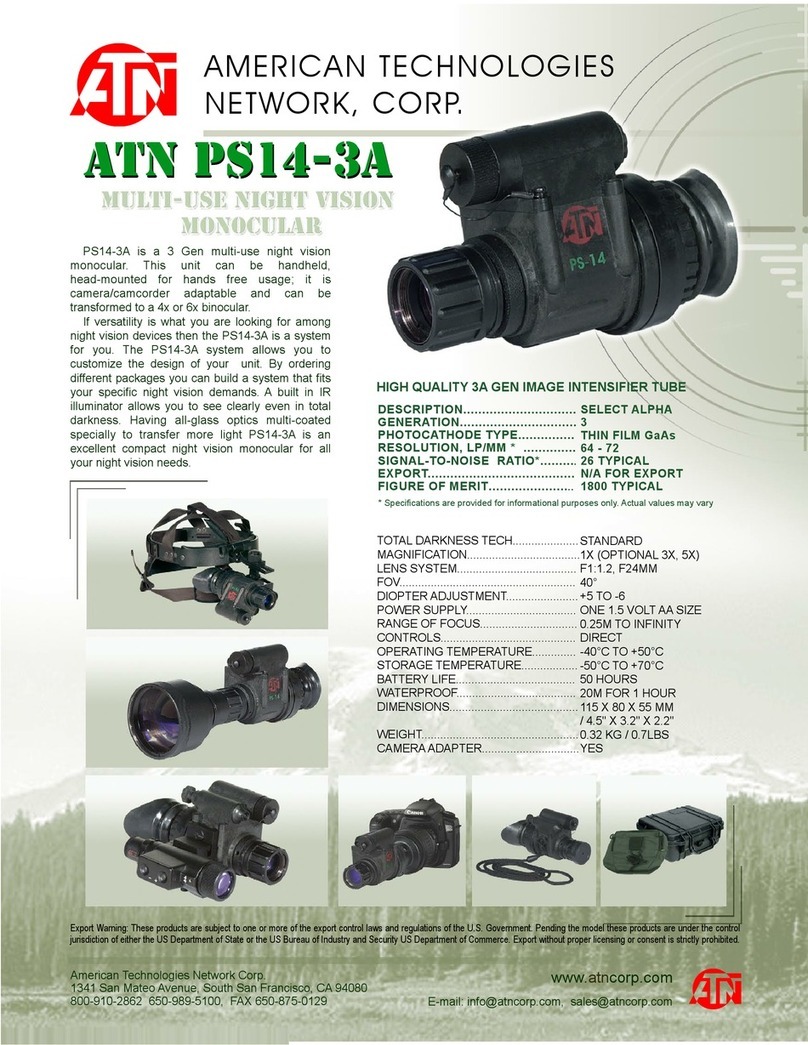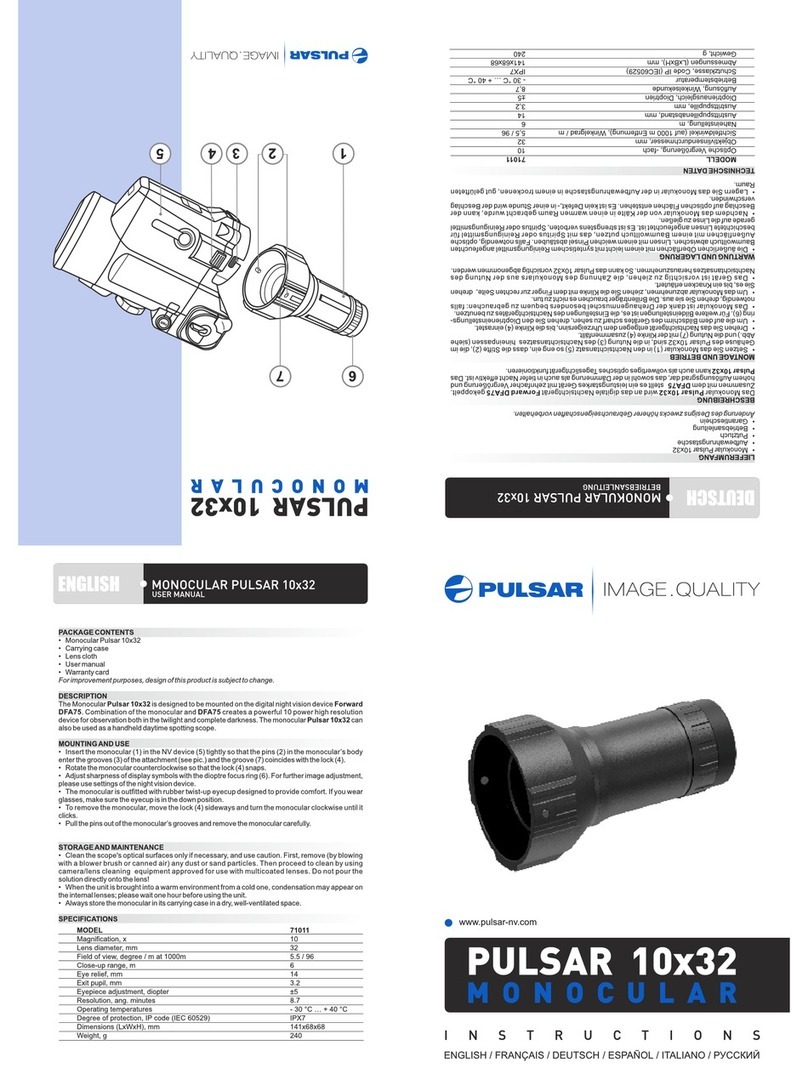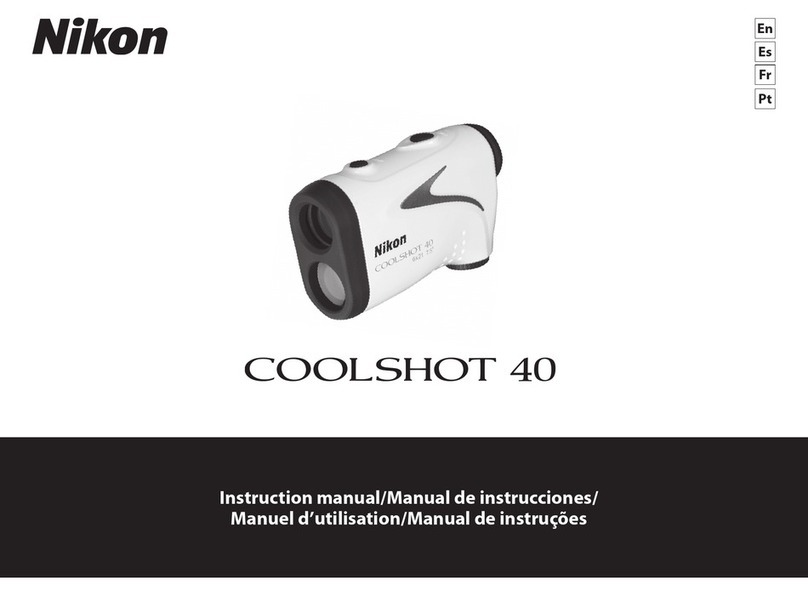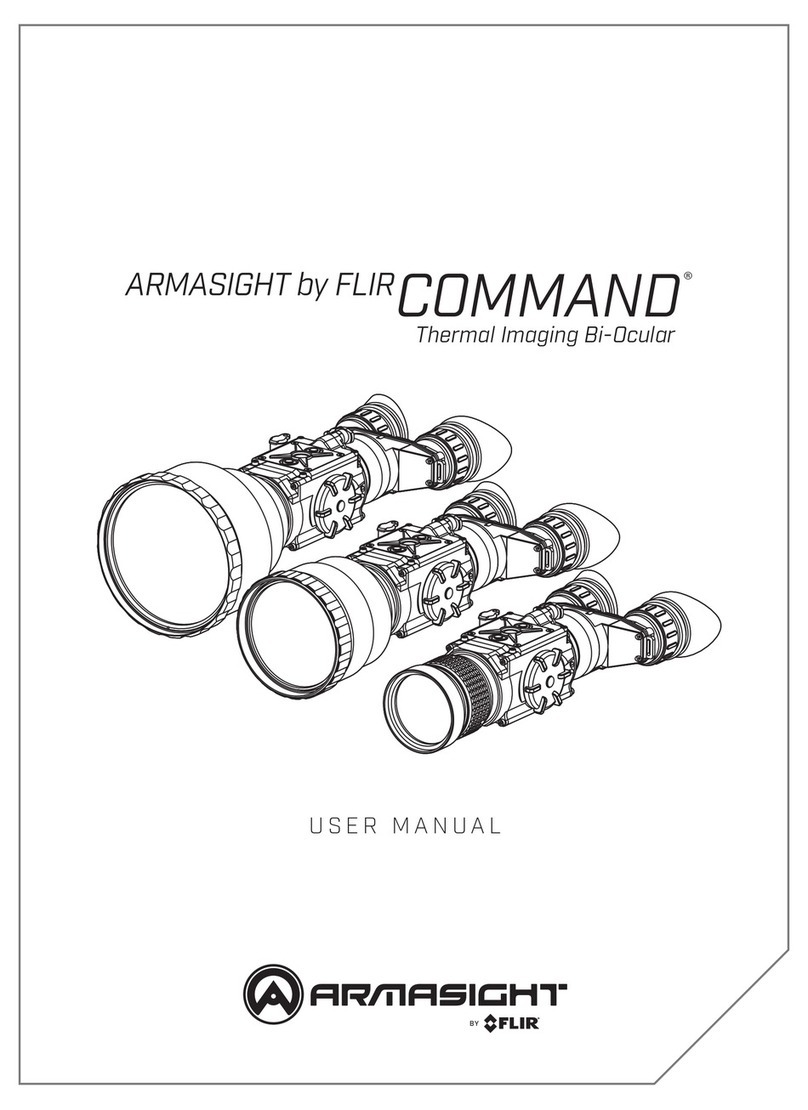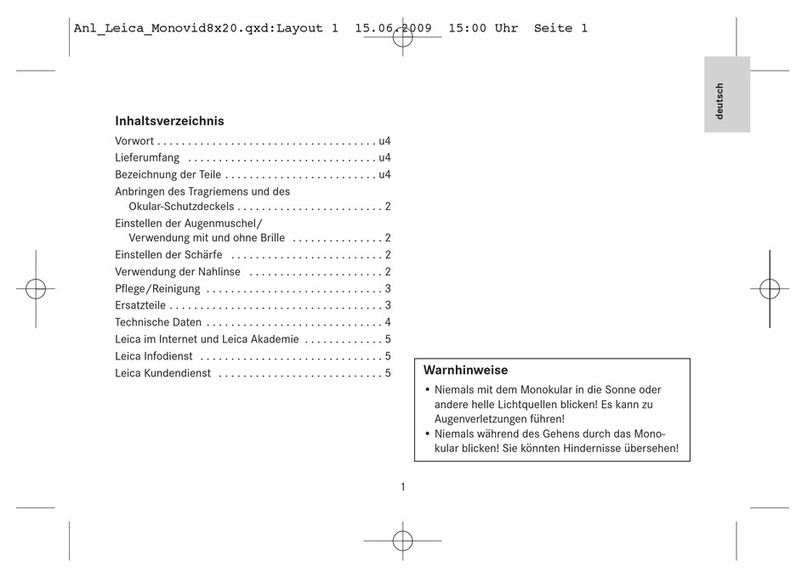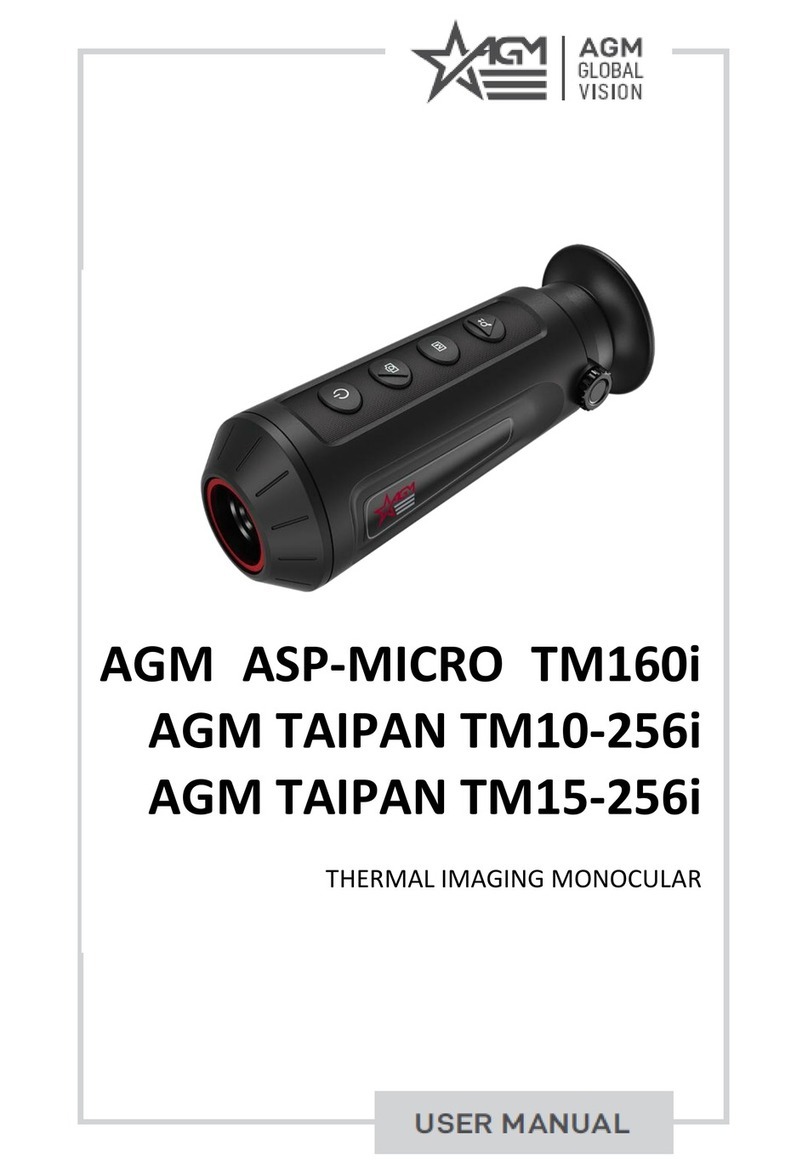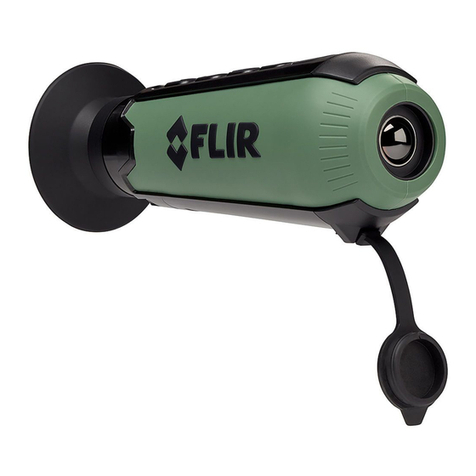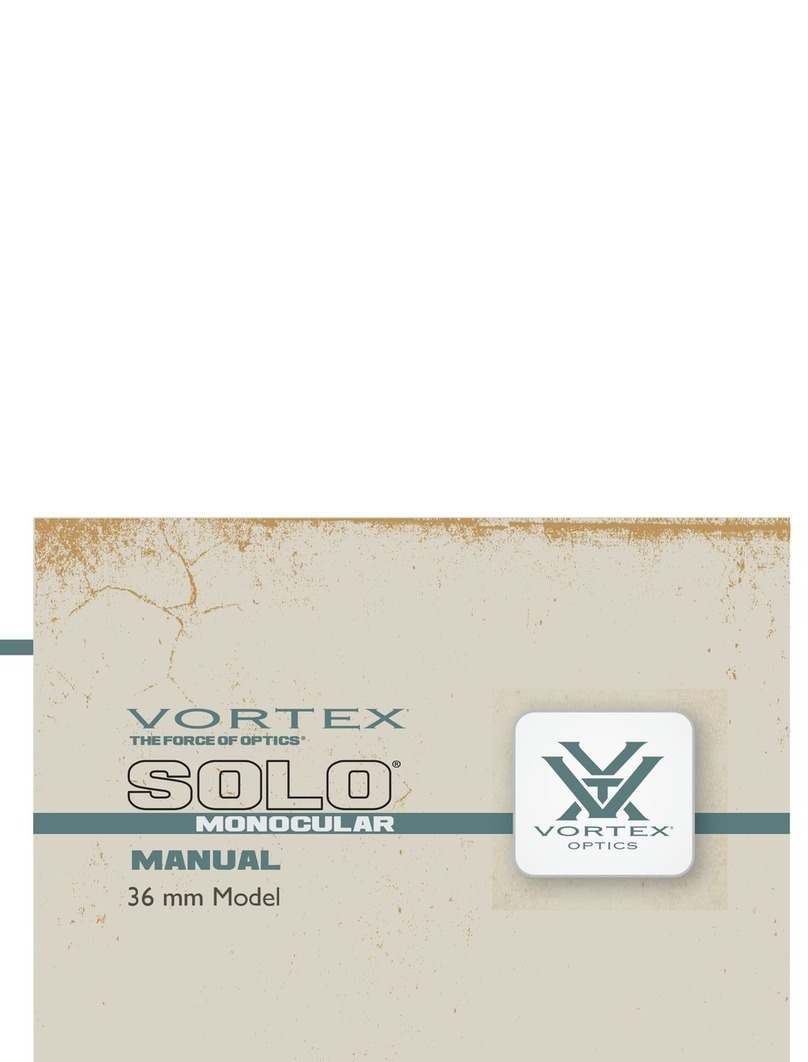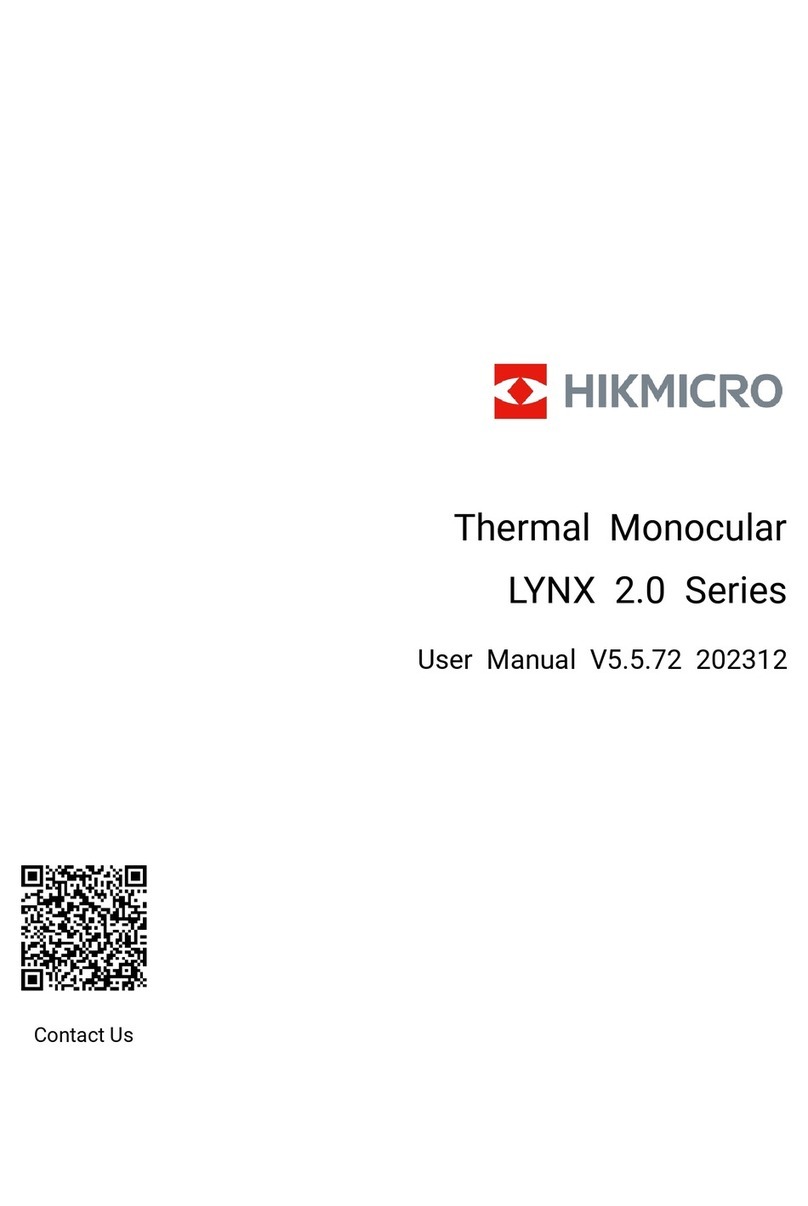1m
SAFETY
PRECAUTIONS
~
~Cautions
~
•
~·
8
•
•
•
The Nikon
Laser
Rangefinder
is
not
designed for
use
underwater.
Rain,
water, sand and
mud
should
be removed
from
the
rangefinder
body
surface
as
soon
as
possible,
using a soft, clean cloth.
Do
not
leave the Nikon
Laser
Rangefinder in acar on a
hot
or
sunny day, or near heat-generating
equipment.This may damage or
negatively affect it.
Do
not
leave the Nikon
Laser
Rangefinder in direct sunlight.
Ultraviolet
rays
and excessive heat
may negatively affect or even
damage the unit.
If
the
Nikon
Laser
Rangefinder
is
exposed
to
sudden changes in
temperature, water condensation
may occur on lens surfaces. Do
not
use the
product
until
the
condensation
has
evaporated.
CARE
AND
MAINTENANCE
lenses
• When removing dust on
the
lens
surface, use a soft oil-free brush.
• When removing stains
or
smudges
like fingerprints from
the
lens
surface, wipe
the
lenses very gently
with
a soft clean cotton cloth
or
quality oil-free lens tissue.
Use
a
small
quantity
of
pure alcohol (not
denatured)
to
wipe stubborn
smudges. Do
not
use
velvet cloth or
ordinary tissue,
as
it
may scratch the
lens surface. Once
the
cloth
has
been used
for
cleaning
the
body,
it
should
not
be used again for the
lens surface.
Main
body
• Clean
the
body
surface
with
a soft,
clean cloth after
blowing
away dust
with
a blower* lightly. Do
not
use
benzene, thinner, or
other
cleaners
containing organic solvents.
*A
blower
is
rubber cleaning
equipment
that
blows air from a
nozzle.
Storage
• Water condensation
or
mold
may
occur on
the
lens surface because
of
high humidity.Therefore, store the
Nikon
Laser
Rangefinder in acool,
dry place.
After
use
on a rainy day
or
at night,
thoroughly
dry
it
at room
temperature, then store in a cool,
dry place.
1!1
Symbo.l for
separate
collection applicable in European
countnes
This symbol indicates that this battery
is
to
be
collected separately.
The following apply only to users in European
countries.
•This battery
is
designated for separate collection at
an
appropriate collection point. Do
not
dispose
of
as
household waste.
•
For
more information, contact the retailer or the local
authorities in charge
of
waste management.
1!1
Symbo.l for
separate
collection applicable in European
countnes
This symbol indicates that this product
is
to be
collected separately.
The following apply only
to
users in European
countries.
·This product
is
designated
for
separate collection at
an
appropriate collection point. Do
not
dispose
of
as
household waste.
-
·For
more information, contactthe retailer or the local
authorities in charqe
of
waste manaqement.


